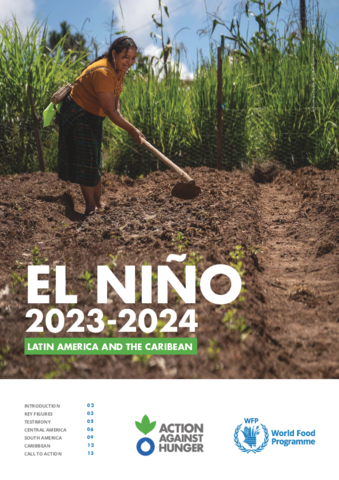
This joint publication by the World Food Programme (WFP) and Action Against Hunger presents the impacts of El Niño in Latin America and the Caribbean (LAC) in 2023 and 2024. It details the emergency response and resilience activities that WFP and Action Against Hunger prioritized following the onset of El Niño conditions.
In 2023, El Niño conditions led to prolonged droughts and water shortages in the Central American Dry Corridor, Bolivia, and Colombia, alongside intense rainfall and flooding along the coasts of Ecuador, Peru, and inland Bolivia. Climatic variations led to agricultural impacts and increased risk of crop loss due to droughts and floods, exacerbating food insecurity, economic hardships, and the vulnerability of communities reliant on agriculture for their livelihood. The publication highlights the estimated number of people in rural communities exposed to drought in Central and South America. Key findings from the WFP RBP and HQ VAM unit indicate that up to 1.3 million people were exposed to severe drought in 2023 in 8 countries of LAC.
The publication underscores the significance of adequate anticipation, preparedness, and response to climate emergencies in LAC. It recommends strengthening emergency preparedness measures through the development of anticipatory action plans, increased support to social protection systems, and bolstered capacity-building efforts for regional governments' emergency response.
